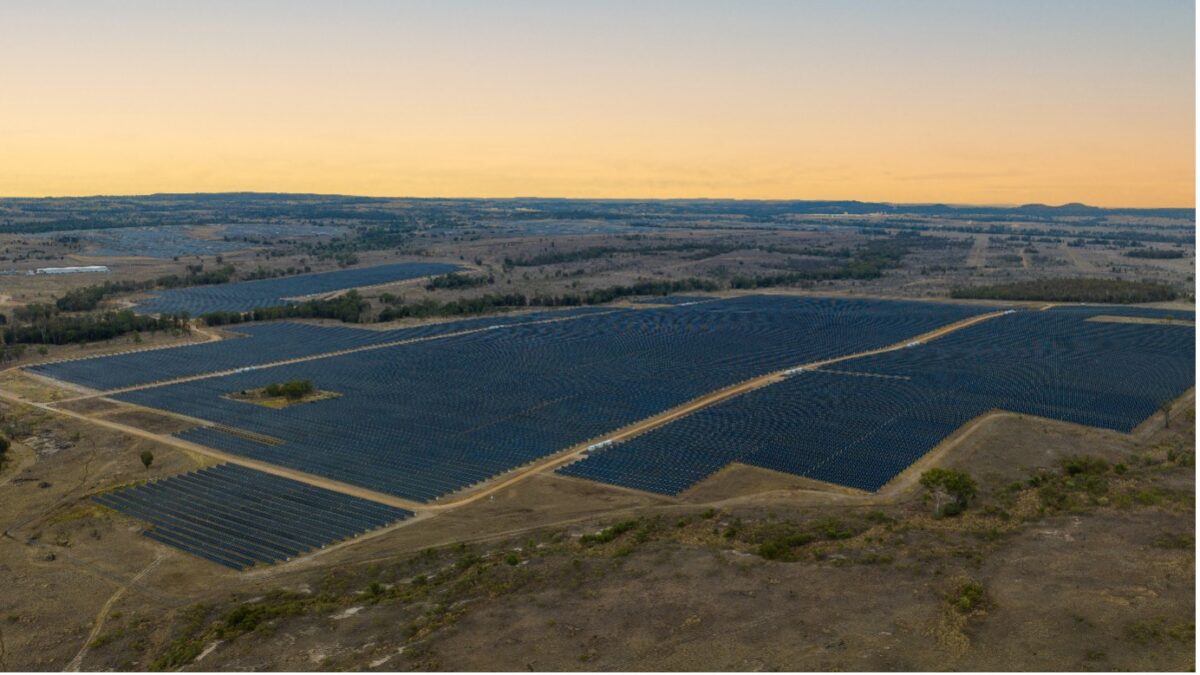Net-zero pledges, corporate responsibility, and compelling cost competitiveness is leading a growing number of Australian companies to sign offtake agreements with solar and wind power projects. With both the size and number of these deals expanding, power purchase agreements (PPAs) are shaping as a major driver for large-scale PV in the coming years.
“Looking at the [emissions reduction] targets of the utilities, some of the industrials, and where they need to get to by 2030 there will be offtake agreements,” says David Dixon, a Sydney-based senior analyst with Rystad Energy.
Dixon points to new data centers, in places like Sydney, as adding sizeable new electricity load, that can be supplied by large-scale solar.
Indeed, tech giants like Google, Apple, and Meta (formerly Facebook) have been drivers of utility-scale PV deployment by virtue of the large PPAs they have signed.
Amazon Solar Project
On Feb. 7, Amazon signed a 125 MW PPA with Singapore-based Vena Energy for a project located in Wandoan, which is approximately 350 km north east of Brisbane.
By virtue of the PPA, the project received a new name – the Amazon Solar Project Australia. It will remain owned by Vena. The duration of the PPA is confidential. The solar project is part of the larger Wandoan South Project – which comprises 650 MW of solar and is set to be coupled with 450 MW of battery energy storage.
“Amazon is on a path to power our operations with 100% renewable energy by 2025, and we’re proud to deliver new solar and wind projects in Australia, driving strong sustainability outcomes for our customers and local communities,” said Ken Haig, head of energy and environment policy, Asia Pacific and Japan at Amazon Web Services. He noted that Amazon has invested “billions” in Australia.
The 125 MW “Amazon” solar project deploys Risen Modules, central inverters from Power Electronics, and single-axis trackers from PV Hardware. A spokesperson from Vena concurred that PPAs with companies such as Amazon play an important role in solar project’s reaching financial close.
“Based on our experience, securing an offtake agreement with a creditworthy and renowned counterparty like Amazon significantly enhances a project’s appeal to debt capital, due to the enhanced financial stability and reduced risk profile such an agreement brings to the project,” the Vena spokesperson explained.
“When we think about whether a project gets to financial close, we only think about three things: grid, having a spot on the grid is a big challenge in Australia; two is whether you have all of the approvals, but there are enough solar projects approved; and the third is revenue – if you don’t have that, particularly for solar, the bank is not going to lend you money,” said Dixon. “Corporate PPAs do still come in.”
Mining PPAs
Dixon pointed to the 1.1 GW deal miner Rio Tinto signed with the Upper Calliope Solar Farm planned for the Gladstone region in Queensland. Construction on the project is set to begin in 2025 or 2026.
On Feb. 21,Rio also signed a PPA to purchase 80% of the power generated by the massive, planned 1.4 GW Bungaban wind energy project.
Investment bank Macquarie noted that Rio is looking to procure 4 GW of solar and wind power for its operations, in particular for “repowering its aluminium assets at Gladstone (Boyne Smelter, Yurwin Alumina Refinery and Queensland Alumina Refinery) with green electricity.”
Between the major miners and tech companies, PPAs are proving a significant driver of large-scale renewable deployment in Australia, during a period in which price cannibalization is causing significant headwinds.
In Sydney alone, Rystad charts 600 MW of new electricity load from data centres that is coming online.
“Even though there are cheap [wholesale electricity] prices in the middle of the day, there are new, large industrial loads – and a good example is data centres and the aluminum smelters,” said Dixon.
This content is protected by copyright and may not be reused. If you want to cooperate with us and would like to reuse some of our content, please contact: editors@pv-magazine.com.




1 comment
By submitting this form you agree to pv magazine using your data for the purposes of publishing your comment.
Your personal data will only be disclosed or otherwise transmitted to third parties for the purposes of spam filtering or if this is necessary for technical maintenance of the website. Any other transfer to third parties will not take place unless this is justified on the basis of applicable data protection regulations or if pv magazine is legally obliged to do so.
You may revoke this consent at any time with effect for the future, in which case your personal data will be deleted immediately. Otherwise, your data will be deleted if pv magazine has processed your request or the purpose of data storage is fulfilled.
Further information on data privacy can be found in our Data Protection Policy.